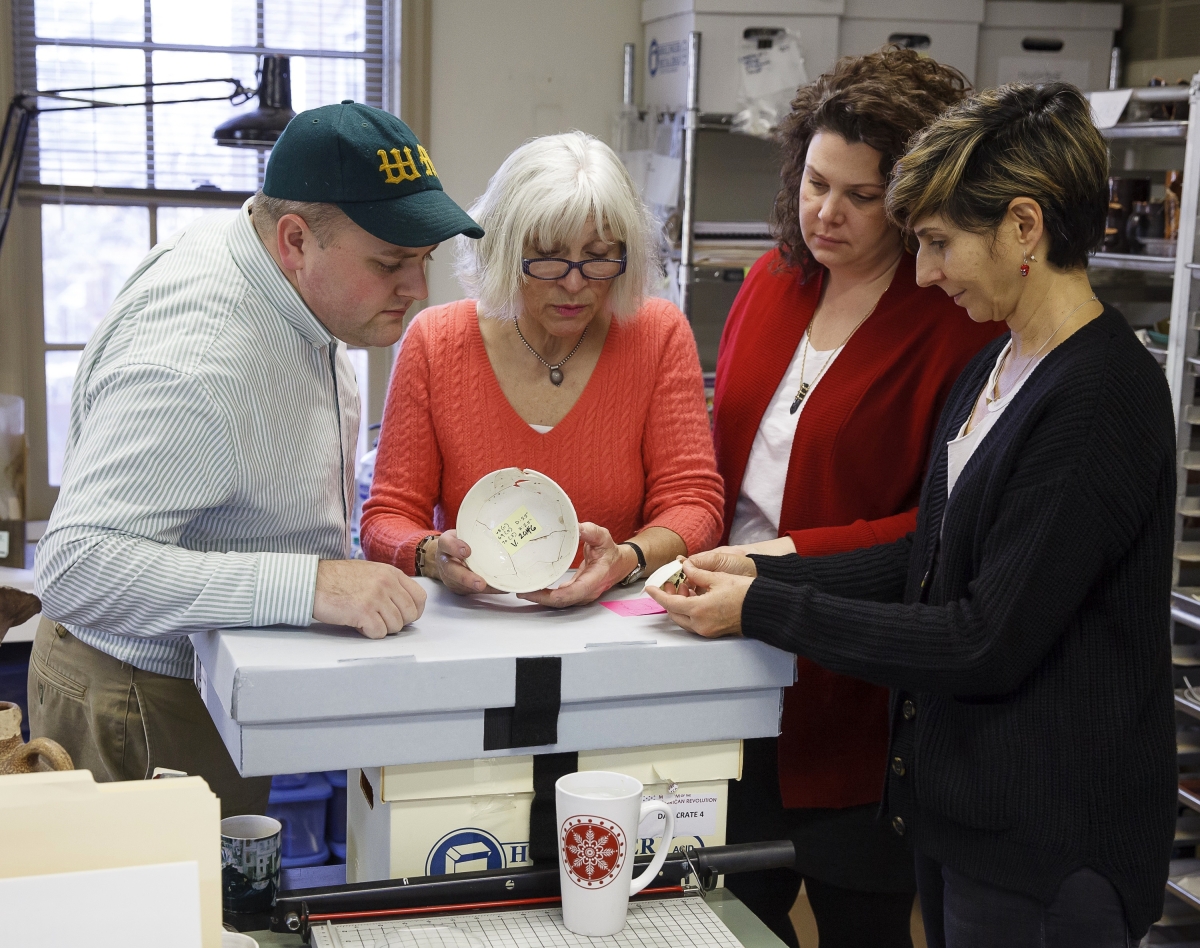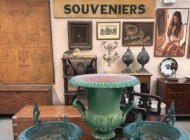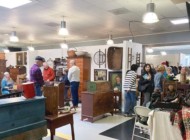
A white punch bowl is examined and discussed here in the archaeological laboratory of Commonwealth Heritage Group, Inc, West Chester, Penn., February 2016. —Robert Hunter photo
PHILADELPHIA, PENN. – At first glance it may seem unassuming, but a small, white bowl uncovered during an archaeological excavation in Philadelphia has thrilled the ceramics world. The bowl marks the first physical proof of American-made true, hard-paste porcelain found.
Hard-paste porcelain, first produced by Chinese potters around the Seventh Century, is notable for its desirable degree of translucency. Attempts to replicate the process were ongoing throughout the Western world in the Eighteenth Century.
“One of the most intriguing stories in the world of ceramic history is the search for the secrets of making hard-paste porcelain,” said Robert Hunter, editor of Ceramics in America and an author and archaeologist. “The search, however, for physical evidence of making true porcelain in Eighteenth Century America has been frustratingly unsuccessful – until now. The discovery of this bowl is like finding the holy grail of American ceramics, and is a thrilling addition to the history of the American effort to produce this coveted material.”
Recovered in 2014 from among nearly 85,000 artifacts found on the site of the new Museum of the American Revolution by archaeologists from Commonwealth Heritage Group, the bowl was initially thought to have a stoneware body. However, subsequent material analysis by Dr J. Victor Owen, an expert on the geochemistry of archaeological ceramics and glass, and his colleagues revealed that the Eighteenth Century punch bowl is true porcelain that most likely was manufactured in Philadelphia.
The findings are presented in the January issue of Ceramics in America by Hunter and Juliette Gerhardt, lab director from Commonwealth Heritage Group. An analysis of the geochemistry by Owen’s colleagues also is included in the issue. Ceramics in America is an annual journal published by the Chipstone Foundation of Milwaukee, Wis.
The bowl will be exhibited for the first time at the New York Ceramics and Glass Fair. As part of the fair’s lecture series, Hunter will discuss the discovery and significance of the bowl on Thursday, January 19, at 2 pm. It will then return to the Museum of the American Revolution.
“The discovery of this remarkable little bowl reminds us that the ‘buy local’ movement has very deep roots in American history,” said Dr R. Scott Stephenson, vice president of collections, exhibitions, and programming at the Museum of the American Revolution. “It is also an important reminder that when colonists boycotted imported British goods as a way to protest Parliamentary taxation, they did not have to settle for crude versions of beloved luxuries from abroad. Colonial tradespeople produced elegant textiles and ceramics for a market eager to use the ‘power of the purse’ to make a political point.”
Archaeologists from Commonwealth Heritage Group, Inc conducted fieldwork at the site of the new Museum of the American Revolution, July-October 2014 and briefly in April 2015 and May 2016, uncovering a record of occupation from the earliest settlement of Philadelphia through the mid-Twentieth Century. Most of the artifacts were found in brick-lined privy and well shafts. The features contained an enormous quantity of ceramics, including locally made Philadelphia objects and imported English, German, and Chinese wares.
The Museum of the American Revolution, which opens in the heart of historic Philadelphia on April 19, will explore the story of the American Revolution using its collection of Revolutionary-era weapons, personal items, letters, diarie, and works of art.
For more information, www.amrevmuseum.org or 877-740-1776.




